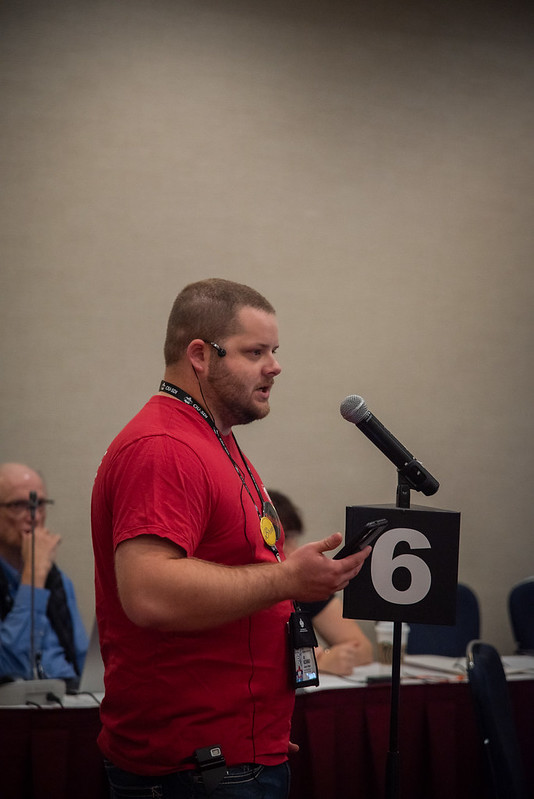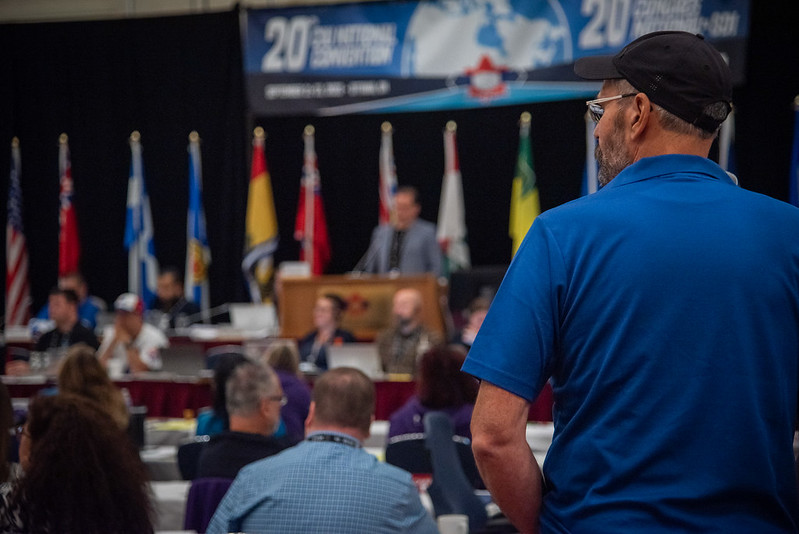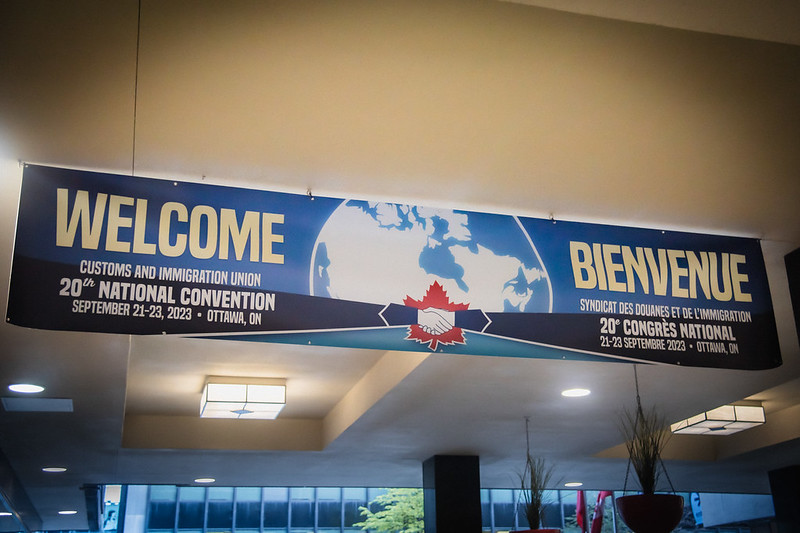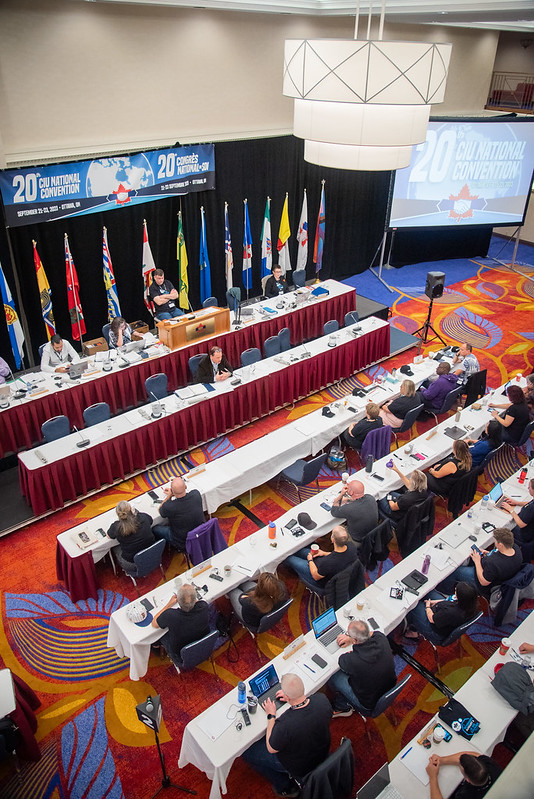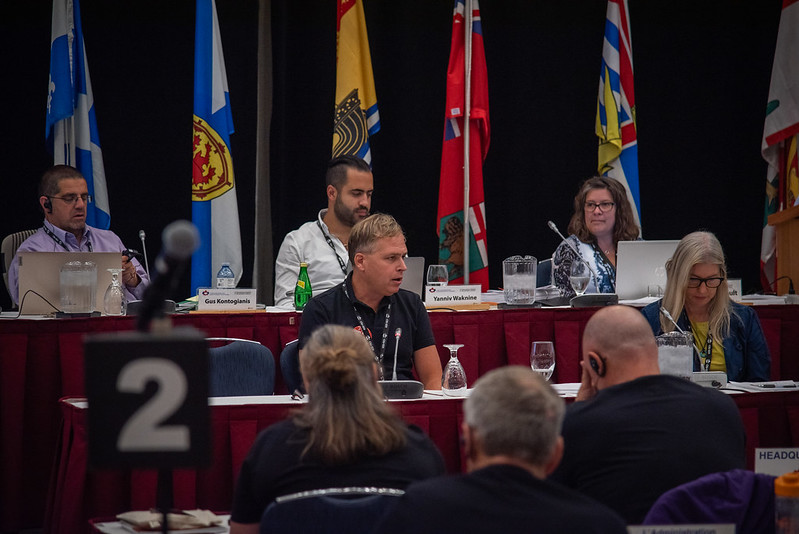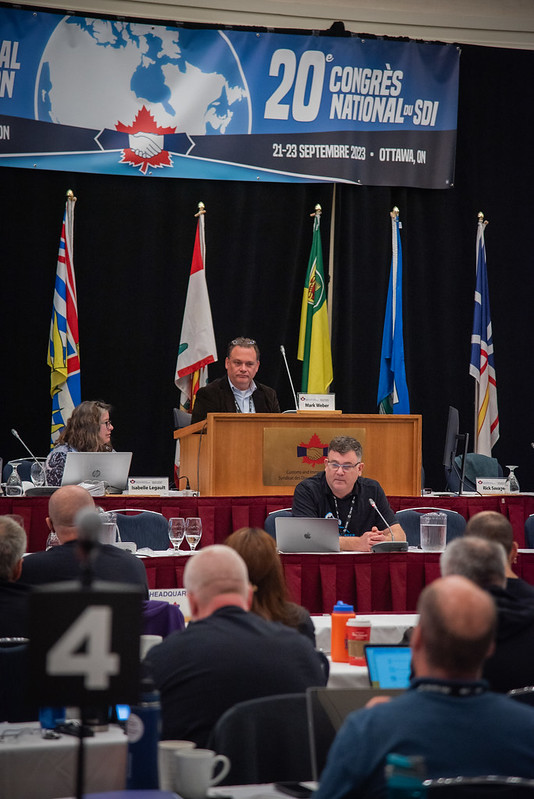The PSAC-CIU bargaining team has declared impasse at the bargaining table during talks September 26 and 27 after the Canada Border Services Agency (CBSA) refused to budge on our key issues and continues to insist on concessions.
Since the outset of bargaining, we have identified key issues for our members to reach a new collective agreement, including:
- Economic parity with the broader law-enforcement community;
- Protections for our jobs and new protections in the context of CBSA management’s heavy-handed approach to discipline;
- Access to telework for our members;
- New rights around VSSAs and shift scheduling.
The employer refused to move on these key issues.
We’ve also repeatedly made it clear at the table: If the employer is serious about working towards a fair deal, the Treasury Board President must honour the commitment made during the last round of bargaining and make equitable retirement — 25 and out — a reality for our members.
Throughout bargaining, we’ve pushed for economic increases that match other public safety agencies across the country. This will address outstanding recruitment and retention issues at CBSA.
Shockingly, when discussing wages and allowances, the employer stated that CBSA has “no recruitment or retention problems”. Every FB member from coast to coast to coast knows that CBSA has serious issues attracting and retaining workers. We live it every day through understaffing and lack of resources.
PSAC-represented public safety personnel – from Parole Officers to Fisheries Officers to Enforcement and Wildlife Officers – were recognized by receiving additional wage adjustments in the Treasury Board agreements negotiated earlier this year. But FB members are being told to accept less.
The employer also continues to seek concessions at the table, from clawbacks to shift-change notice and care and nurturing leave, to negotiated shift schedules that would negatively impact our members.
We are committed to negotiating improvements for our members, not steps backwards
We are determined to reach a fair contract, one that protects our hard-fought gains and provides new rights and protections for PSAC-CIU members. We deserve to be treated with respect.
We’ve had enough. Given this lack of progress in negotiations, we have declared impasse, and contacted the Federal Public Sector Labour Relations and Employment Board in an effort to move the process forward.
What’s next?
We will continue to provide updates as things progress. As always, membership support will be the key to getting a fair contract.
Please be sure to keep your contact information up to date to receive all the latest updates about bargaining. If you have any questions, please contact your Customs and Immigration Union branch president or visit the CIU and PSAC websites.
This article was first posted on the PSAC website.












